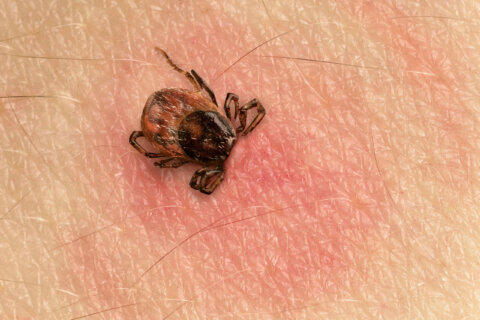Jack Frost nipping at your nose may sound romantic in traditional Christmas songs, but atypical cold temperatures in the D.C. area last month have been causing cases of frostbite that can be dangerous.
The burn center at MedStar Washington Hospital Center has seen eight cases of frostbite this season severe enough to warrant surgery, which is at least double this time last year.
“Some of these are devastating cold injuries that are leading to toe and foot amputations,” said Dr. Taryn Travis, a burn surgeon at MedStar Washington Hospital Center.
Burn surgeons are the doctors who respond to tissue damage caused by frostbite. Travis wants to emphasize how important it is to seek medical attention quickly in potential cases.

“Sometimes frostbite doesn’t seem like such a big deal in the first 24 to 48 hours, and so people wait until they see blistering or they get very swollen, and often by that time, it’s too late for us to intervene,” Travis said.
Earlier warning signs that indicate medical attention is needed are things such as numbness, tingling, and paleness of the fingers, toes, feet or hands. Tissue damage tends to involve more vibrant colors.
“Any sort of blue, purple or gray discoloration of fingers or toes needs to be presented to the hospital as quickly as possible,” Travis said. “We have a very short window where we can intervene if people do have tissue damage.”
It doesn’t take long for exposure to cold temperatures to become too much for bodies to handle.
“If you have feet, toes, fingers, hands that feel numb, and you’ve been out in the cold for really as short as 30 minutes, it is time to get inside and warm yourself up,” Travis said.
Other tips from Travis:
- Pay attention to the weather forecast.
- If you know cold weather is coming up, dress accordingly.
- Dress in several layers of loose, warm clothing on hands and feet.
- Fingers, ears and toes need to be covered with dry warm clothes and shoes and gloves.
- Avoid alcohol and caffeine if you’re going to be out in the cold for a long period of time because that reduces the time it takes to get frostbite.
“If you notice numbness, tingling, get yourself inside and warm as quickly as possible. If you start shivering, this is your body trying to tell you, ‘I need to get warmed up,'” Travis said. “If you do have these exposures, warm yourself up with warm water and a warm environment as quickly as you can.”








